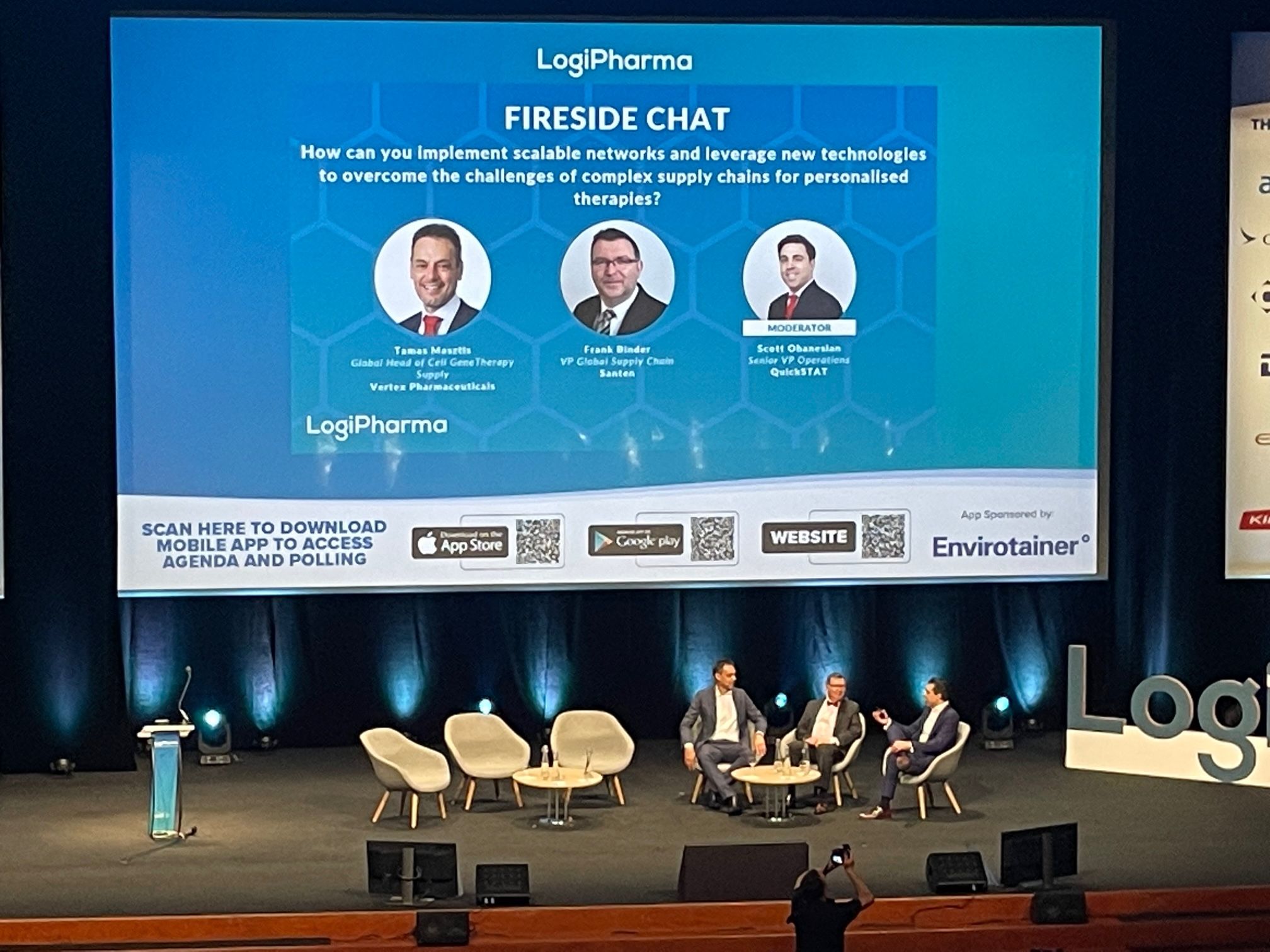LogiPharma Europe 2024: Obstacles Surrounding Personalized Therapy Supply Chains
Session addresses the challenges of implementing autologous/allogeneic cell gene therapies into scalable networks.

Cell and gene therapies (CGTs) are becoming more of a focus for Pharmaceutical Commerce, especially given the fact that many of them require cryogenic shipping and storage in order to be effective.
When it comes to the use of cell therapies for medical treatments, two types include autologous and allogeneic. Autologous features cells or tissues that are attained from the same person who is going to be undergoing the treatment (the patient is their own donor), whereas allogeneic include cells or tissues that are gathered from a different person.1 The former could present a lower rejection rate, but cell quality/availability could affect how suitable a person may be to take that route, while the latter calls for matching to ensure compatability.1
In LogiPharma Europe’s fireside chat2 on “How can you implement scalable networks to overcome the challenges of complex supply chains for personalized therapies?” the moderator, Scott Ohanesian—SVP of commercial operations at QuickSTAT—was joined by Tamas Mastzis, global head of cell gene therapy supply, Vertex Pharmaceuticals and Frank Binder, Santen’s VP of global supply chain.
To lead off the chat, Ohanesian provided attendees with some hard-hitting facts, including that the first gene therapy was approved by the FDA back in 2017 (tisagenlecleucel), and seven years later, 35 CGTs have been approved in the United States thus far, including four in 2024.
When it comes to trends in the CGT space, approvals tend to move at an “intense” pace, as over 20 approvals are expected annually in both the United States and European Union. However, scalability continues to be a challenge and these CGTs are still maturing, which is why collaboration within the supply chain is so critical, for the sake of the patient; autologous supply chains must be scaled out, while allogenic supply chains are to be scaled up.
Pertaining to the implications for the targets for autologous and scale, Binder noted that it's like the “Holy Grail” in the pharmaceutical supply chain, in terms of what you have for the autologous treatments.
On the other hand, noted Mastzis, allogeneic presents different shares of logistical obstacles. “We know that if we cannot bring the patient the product we fail, so that can have be very consequential for the patient. In order to operate, the autologous supply chain is a kind of craftsmanship. You have to make sure everything works; you also have a lot of time constraints, and a lot of other logistical challenges.”
A poll conducted during the session noted that 44% of attendees are working with CGTs right now, but another poll showed that 59% of them are not working closely together with their clinical and commercial teams, an indication of a challenge regarding communication.
From a product lifecycle management perspective, why is it important to have supply chain come in earlier than in the past with small molecules? By pursuing early stages, companies can establish manufacturing plants sooner, which could be a more efficient option.
“I think the traditional model has been really to toss over the product to commercial supply chain commercial manufacturing, sometimes in Phase III,” said Binder. “And for a long time, I have said ‘look, this is not the business.’ But if you look at other industries, the good practices, that manufacturability and also the commercial supply chain is included in the very early stages of development, but at least with small molecules—and also to some extent with large molecules—there is a reason why clinical supply chain is different from commercial supply chains.
“With large molecules already, this becomes a problem because when you have a Phase III supply, typically you don't want to change your manufacturing site anymore, so you lock in a lot of things already.”
References
1. Single Use Support. Autologous vs. Allogeneic Cell Therapy. Single Use Support. May 18, 2022. https://www.susupport.com/knowledge/cell-gene-therapy/autologous-allogeneic-cell-therapy#:~:text=Autologous%20refers%20to%20cells%20or,individual%20of%20the%20same%20species.
2. Ohanesian S, Mastzis T, Binder F. How can you implement scalable networks to overcome the challenges of complex supply chains for personalized therapies? April 17, 2024. LogiPharma Europe 2024. Lyon.